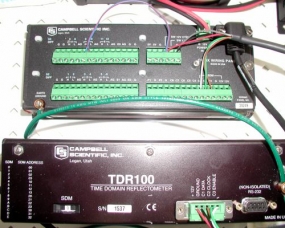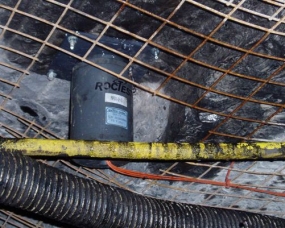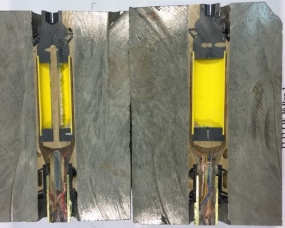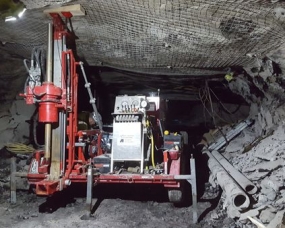4th Conference on Ground Control, West Virginia University, 1985
Authors: H. N. Maleki and M. P. Hardy (AAI), and C. J. H. Brest van Kempen (Brest van Kempen & Associates, Inc.)
Tension-torque relationships were investigated in a coal mine for both standard 5/8-in. (16-mm) bolts and a vibrating wire instrumented bolt, using conventional and controlled installation techniques. The instrumented bolts differed from the standard bolts by their head size and hole preparation procedures. The controlled installation technique developed by the U.S. Bureau of Mines (USBM) involved using hardened washers and lubrication in the bolt assembly, and maintaining a minimum thrust level during bolt installations. The object of this study was to determine the tension to torque ratio (lb/ft-lbs) for standard bolts and instrumented bolts for both conventional and controlled installation techniques, and to modify the bolt assembly so that the ratios would be equal for the instrumented and standard bolts for both installation techniques. It was shown that the instrumented bolts installed in faced holes had a similar tension-torque ratio to that of standard 5/8-in. (16-mm) bolts installed in unfaced holes for each installation technique, and thus they were representative of other instrumented bolts. This was achieved by evaluating the influence of several factors on the relationship, including facing the hole surface, introducing washers and lubrication in the bolt assembly, and applying different levels of thrust at installation due to bolter operator practice. The tension to torque ratio for conventional bolts was only 21 (lb/ft-lb) for the coal mine, resulting in an installation tension of 4000 lbs (17.8 kn) with the typical installation torque of 150 to 200 ft-lb. This tension level was approximately 50 percent of the required bolt tension, and thus, it was concluded that torque standards are not sufficient to assure adequate bolt tension. The low tension levels were due to the particular bolt hardware in use, operator practice, and bolt bending.






